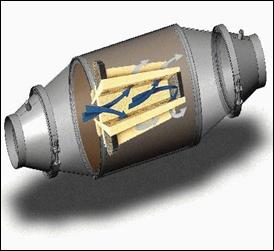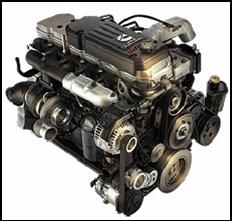


|
Background Information |
|
· Cummins ISL: 310 – 350 hp · Medium Duty Trucks · Motor Home · Urban Bus & Shuttle · Fire & Emergency · Cummins ISM: 280 – 450 hp · Heavy Duty Trucks · Motor Home · Urban Bus & Shuttle · Fire & Emergency · Cummins ISX: 385 – 565 hp · Heavy Duty Trucks · Motor Home · Fire & Emergency · Cummins 610 Turbo Diesel (picture on right): 325 hp · Dodge Ram 2500/3500 III. Diesel Soot Filters: The diesel particulate filter is not complicated or even complex. The filter works on the same principle as every other filter. It is made from very adsorbent material that looks like a solid piece so as to catch the soot but with small porous holes that allow the exhaust vapors to escape through the exhaust stack. The material is usually cordierite or silicone carbide which also helps by absorbing diesel fumes. The figure on the left gives you a good view of what a diesel soot filter system looks like. This helps us by giving us an idea of where we might be able to place the sensor and how it will take the readings in the filter itself. The cordierite filter is basically a cylinder placed into a metal can . Usually filter cans are made from heavy gauge steel to deal with the high exhaust temperatures being produced from the diesel engine. The filter can is clamped on by means of two clamps located on both ends of the filter, which allows for easy maintenance whenever it is necessary. Another important aspect of the figure on the left is that it shows exactly how the soot and other particles are caught in the filter. The figure displays an enlarged representation of the operating portion of the filter. The exhaust gases (blue arrows) enter an input channel of the filter and then pass through the cordierite walls of the filter. As the gas passes through the wall it deposits the particulate matter on the filter walls and exits through the output channel (gray arrows). |



|
Cummins |
|
Diesel Particulate Filter |